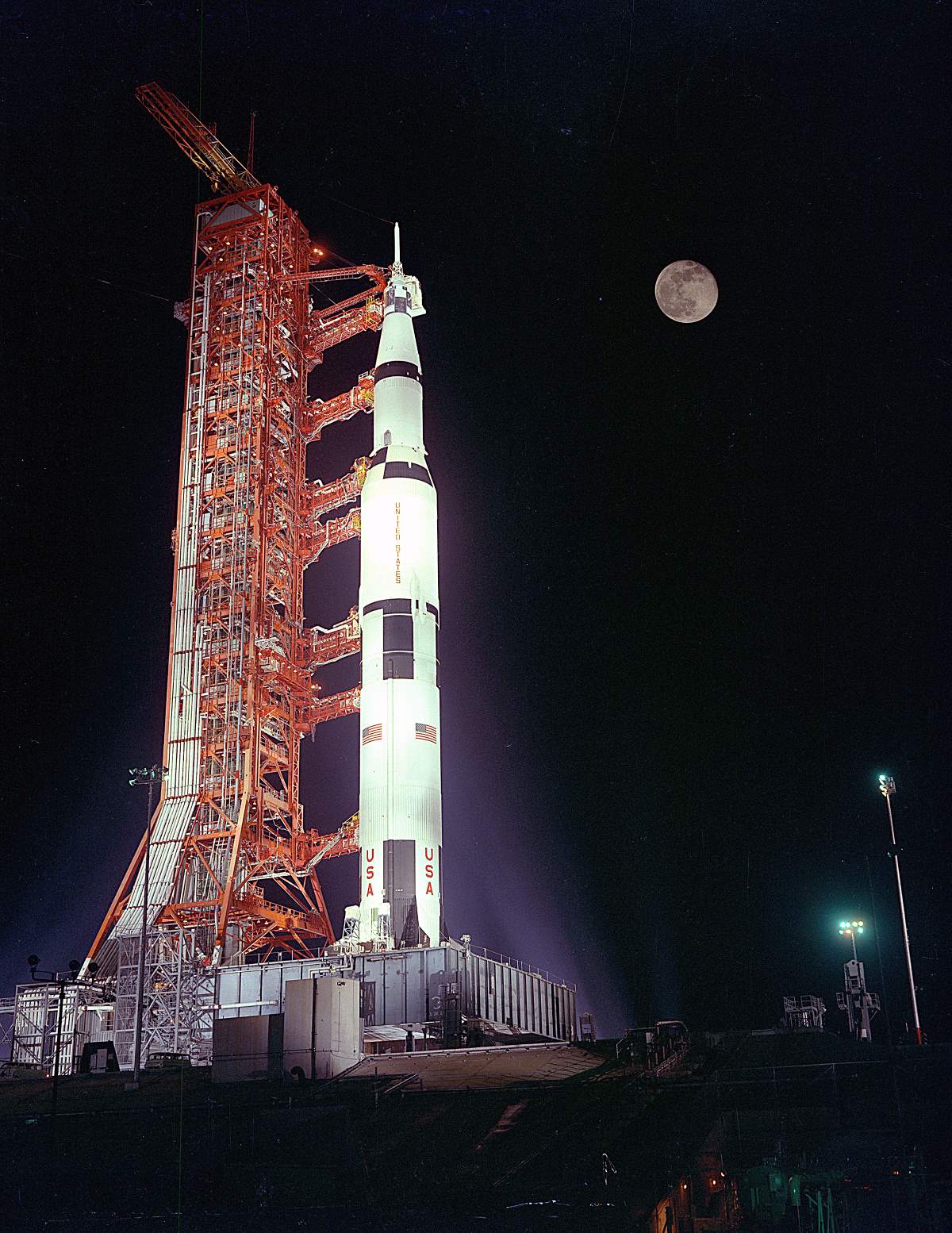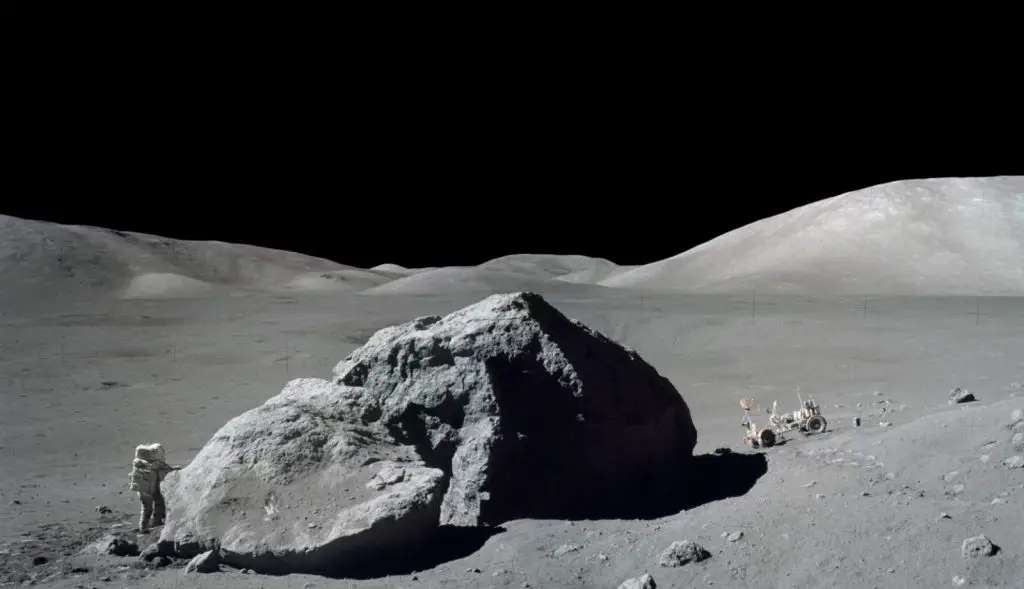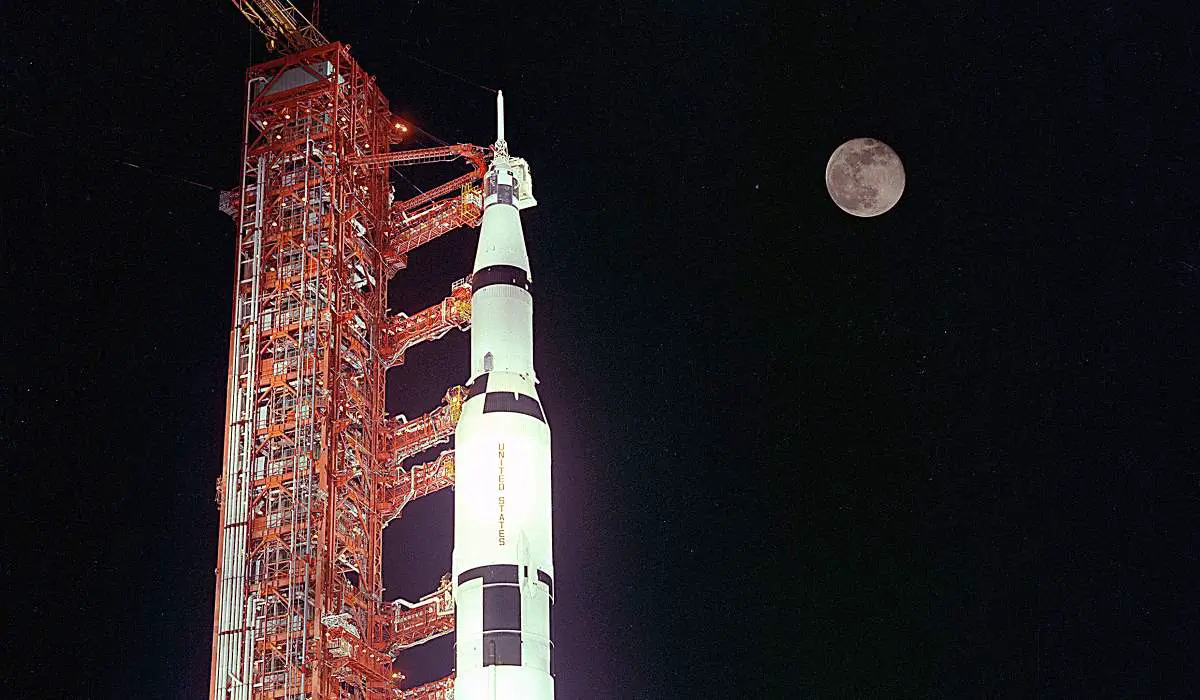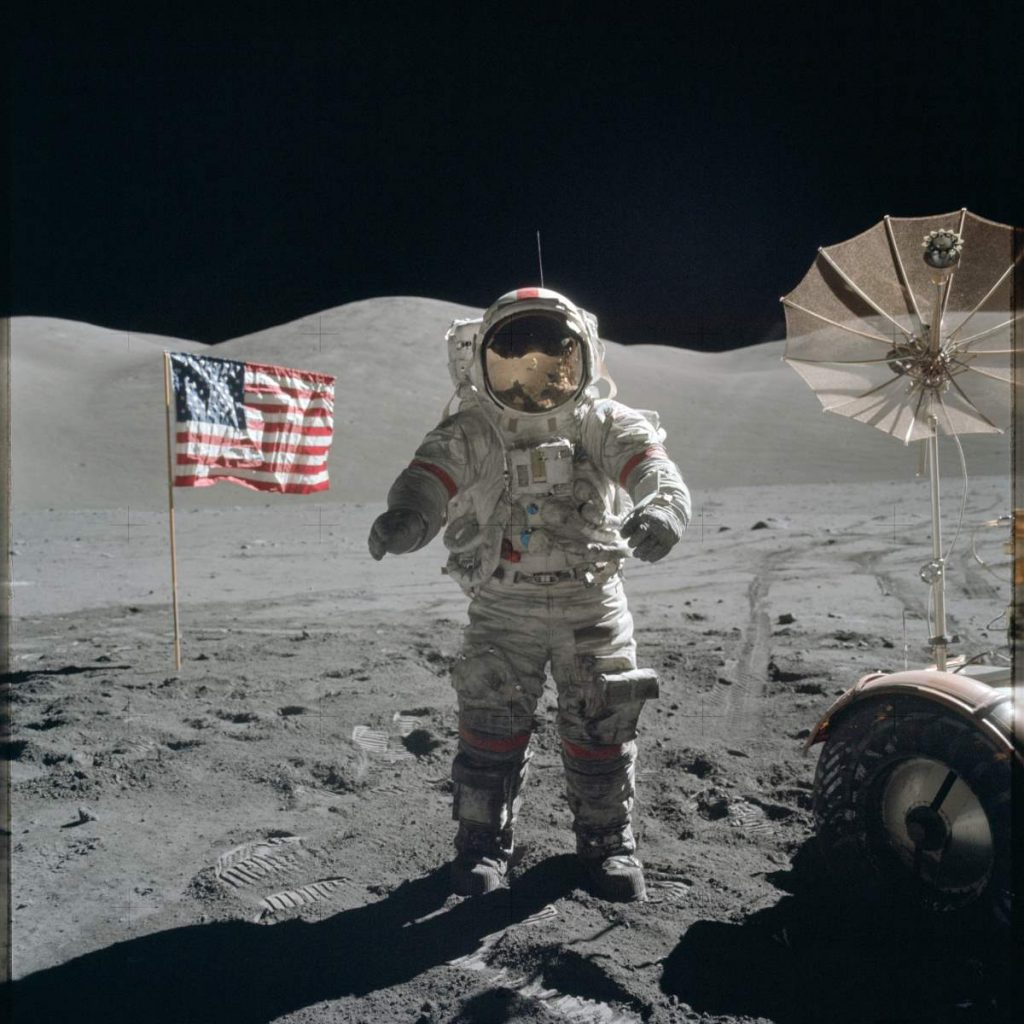An amazing NASA archive photo showing Apollo 17 during the prelaunch, with the Moon (a full moon), the spacecraft’s destination is in the background.

A beautiful comment about the photo above on Reddit:
“Every time I see the Saturn V on the MLP it never does its size justice. The astronauts are just three tiny little specks sitting on top of this thing, with nothing but pure controlled chaos happening beneath. When I went to see it in Houston, the first thought that came to my mind was ‘Man, those guys were absolutely f…g nuts.’
And then you watch it launch, and you see the exhaust plumes of the Rocketdyne F-1s that are double in length of the rocket itself, and it just gives you chills thinking about how ridiculously powerful it was.
Saturn V will always and forever be my favorite rocket. Today’s are incredibly impressive, but none of them are running on technology designed in the 50s.
What really hits that home is that I saw Bill Anders say in an interview once that as soon as the F-1’s lit he was scared the entire thing was going to shake itself into pieces. He said he was in charge of the astronaut controlled abort handle and he couldn’t even see it straight due to the shaking. He wasn’t sure whether he’d actually be able to reach it if he had to.
I absolutely concur. It’s my favorite machine, it truly shows what humans can do if they only put their mind to it (say what you will, but Project Apollo was in multiple respects barely possible with the technology of its day). And it never stops being amazing that those 7.5/7.8 million pounds of thrust could lift those three sets of brass balls into trans lunar injection orbit.
I don’t get emotional quickly, but any time I see any of these lovely old grandpas talking about how they went to the moon they make me proud and chuckle and almost tear up. They’re so unbelievably calm about it like it was a walk in the park and nothing special. You always see them talking about the right stuff, well they truly had it.
And obviously, they were tremendously good at their job. If I remember reading it right, John Young was one of only two astronauts to ever completely manually fly the entire shuttle deorbit sequence from initiation to wheel stop completely manually… During the first flight of the shuttle which couldn’t be tested unmanned so himself as head of the astronaut office and Bob Crippen casually volunteered to do it.
Man, I could go on forever about these guys… wish I’d had the honor of meeting one sometime.”
Apollo 17
Launched on December 7, 1972, and concluded on December 19, 1972, Apollo 17 was the final mission of NASA’s Apollo program. It was also the 11th manned space mission in the Apollo program.
Its crew consisted of Commander Eugene Cernan, Lunar Module Pilot Harrison Schmitt, and Command Module Pilot Ronald Evans.
Cernan and Schmitt landed in the Taurus-Littrow Valley and completed three moonwalks, taking lunar samples and deploying scientific instruments. The landing site had been chosen to further the mission’s main goals: to sample lunar highland material older than Mare Imbrium and to investigate the possibility of relatively recent volcanic activity. Evans remained in lunar orbit in the command and service module (CSM), taking scientific measurements and photographs.
The mission included the first night launch of a U.S. human spaceflight and the final crewed launch of a Saturn V rocket. It was also the final use of Apollo hardware for its original purpose (extra Apollo spacecraft were later used in the Skylab and Apollo-Soyuz programs).
The mission broke several records: the longest stay on the Moon (74 hours, 59 minutes, 38 seconds), longest total extravehicular activities (moonwalks) (22 hours, 5 minutes, 4 seconds), largest lunar sample (253 pounds or 114.7 kg), and longest time in lunar orbit (75 orbits in 147 hours, 48 minutes).
The last Apollo LRV (Lunar Roving Vehicle) completed the longest single LRV trip at 19 km (11.8 miles). The Apollo 17 LRV also logged the most distance driven on the lunar surface at a total of 35.74 km (22.2 miles).

The first of three Moonwalks lasted 7 hours, 11 minutes, 53 seconds. Astronauts Cernan and Schmitt planted a U.S. flag that had hung in Mission Control since Apollo 11. They also deployed the Advanced Lunar Science Experiment Package (ALSEP), the most advanced ALSEP of the Apollo program, and used the Lunar Roving Vehicle (LRV) to make a lunar excursion to Steno Crater.
The second Moonwalk lasted 7 hours, 36 minutes, 56 seconds minutes. This was the longest Moonwalk of the Apollo program, during which the astronauts used the LRV to make a lunar excursion to South Massif. The total distance driven by the LRV during this excursion was 19 km (11.8 miles), which also established a record for the Apollo program.
The third Moonwalk lasted 7 hours, 15 minutes, 8 seconds. The astronauts used the LRV to make a lunar excursion to North Massif. This was the final Moonwalk of the Apollo program.
During the return trip to Earth, astronaut Evans completed a spacewalk that lasted 1 hour, and 7 minutes. Evans, who remained connected to the Command and Service Module (CSM) by a 7-meter (23-feet) tether, made three trips to and from the Scientific Instrument Module (SIM) bay attached to the CSM Service Module (SM).
Evans retrieved film cartridges from the SIM and floated free for a time. This was the last spacewalk to date performed in deep space (beyond the Low Earth Orbit – LEO).
The return to Earth, splashdown, and recovery were nominal.
Apollo 17 was not originally intended to be the last Apollo flight to the Moon. As a severe economic recession dawned and public interest in the lunar missions waned, lunar missions already designated Apollo 18, Apollo 19, and Apollo 20 were canceled.
Sources
- Apollo 17 on Wikipedia
- Apollo 17 Fact Sheet on SpaceLine.org
- Moon Landings: All-Time List [1966-2025] - February 2, 2025
- What Is Max-Q and Why Is It Important During Rocket Launches? - January 16, 2025
- Top 10 Tallest Rockets Ever Launched [2025 Update] - January 16, 2025


